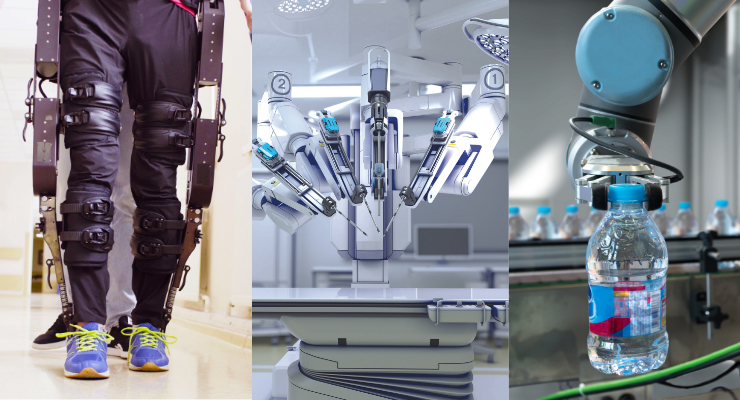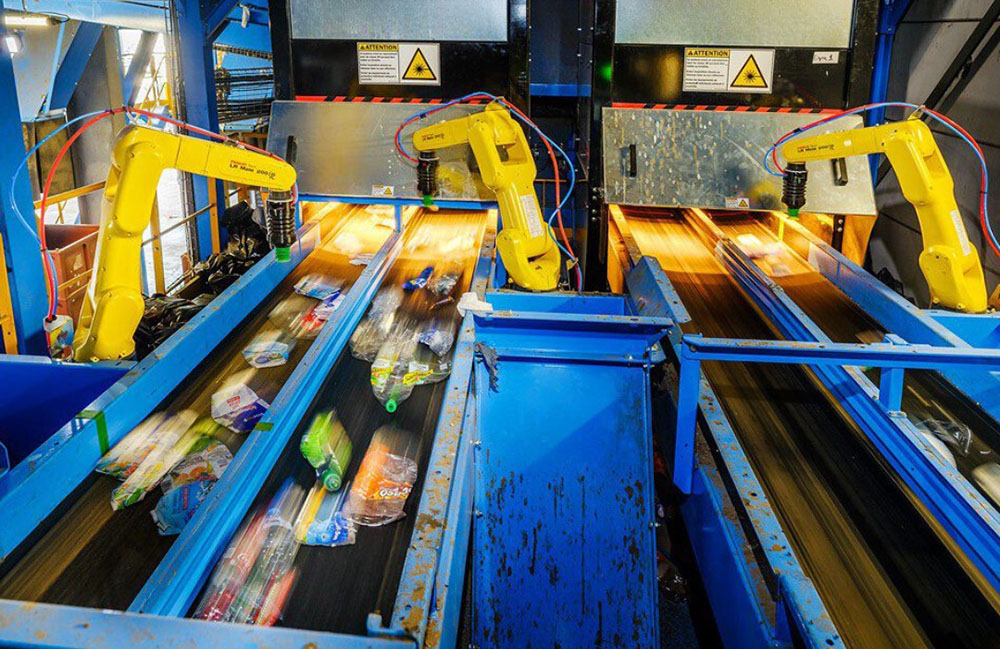
By Julian DelCampo, Senior Industry Manager; Guillaume Mougin, Global Product Manager; Paul Schonhoff, Business Development Manager
Rapidly growing markets for robot innovation include applications that enhance human health and wellbeing, such as bionics and robotic surgery. Robots in these fields rely on miniature DC motion technology, and to realise advances that improve human outcomes, state-of-the-art motion solutions are required. Motors with increasing torque density and dynamics are helping robot designers improve precision and control.
Since the term bionics was coined in the late ‘50s, the technology has grown into a multi-billion-dollar industry. The bionic-prosthetics market is projected to grow from $1.5bn to $2.8bn by 2030, with a corresponding growth in end effector technology for robotic solutions like gripping and holding. Growth is driven by the need to enhance the lives of people with disabilities, supported by technology that enables more effective use of robotics. Bionic solutions include prosthetic limbs powered by small DC motors controlled by myoelectrical signals from the residual limb or a microprocessor that collects data from sensors. Electrically-powered exoskeletons provide external support to the body.
For the patient, prosthetic limbs or exoskeletons must feel natural, so they need to be lightweight. While bionic development uses light yet strong materials like carbon fibre and graphene, the motion systems that drive them must achieve high power density. Brush DC coreless motors are used for smaller body parts like fingers and elbow joints due to their small size and weight, while brushless DC (BLDC) motors support increased torque for larger joints like hips or knees. Portescap’s Ultra EC™ brushless DC series, with its coil design that increases the torque-to-mass ratio, is highly beneficial.

For intuitive operation, bionic devices must provide actuation and control similar to human reactions. Low inertia, achieved through designs like the coreless rotor, enables rapid speed changes combined with low cogging for smooth torque delivery. The slotless design of the Ultra EC series minimizes cogging and enables a consistent magnetic field, reducing torque variations. Battery efficiency is crucial for extending battery life and reducing size and weight. For smaller joints, coreless DC designs minimize energy dissipation by reducing eddy current losses, while brushless motors are inherently efficient.
The requirement for surgical robots is even more widespread than bionics. Since the first robot-assisted surgery in 1985, today’s $4.4bn surgical robot market is projected to grow at 18% up to 2030, driven by trends like AI. A key advantage of robotic surgery is extreme precision, enabling minimally invasive procedures that help patients recover faster. Like bionics, the motion systems powering surgical robots are crucial for precision.
Portescap supports complex applications with its motion control solutions, including frameless motors, which consist of un-housed rotors and stators. Benefits of this technology include size and weight optimization, excellent torque density, ease of integration with strain wave gearing, minimizing backlash, and reducing cogging for smooth motion. While motion systems for bionics must be durable for everyday use, those used in robotic surgery must withstand sterilization. Portescap’s Surgical Motion Solutions feature autoclavable micro motion solutions, with brushless slotted motors able to survive up to 1,000 autoclave cycles.

End effector control is also crucial for robotic application. No matter the application, a robot’s end effectors, commonly based on grippers with parallel jaws or angular motion, are essential for tasks like gripping, holding, or manipulating objects. The integration of machine vision with AI will enable grippers to identify and manipulate objects with greater accuracy, allowing them to perform multiple tasks simultaneously. Electric gripper control, rather than pneumatic, is preferred for its higher degree of control and power density.
Demand for motion systems that accentuate these advantages will continue, including the need for precise position and force control. Dynamic motors that accelerate quickly, like slotless BLDC motors, provide the low inertia, low weight, and high torque characteristics needed. Motors will also be equipped with advanced feedback devices, like high-resolution encoders, for accurate and responsive grip adjustments.
Each sector presents a wide range of robotic application possibilities, placing varied demands on motion systems. To achieve the most effective motion specification, customisation is increasingly required. One motor design can’t serve all needs, so customisation will be crucial to optimise robotic performance for specific tasks, improving patient or wearer outcomes. Customisation also streamlines integration for robot builders, saving time and development costs.
The selection of an optimum motion control partner must consider its capability to optimise performance in compact designs and its ability to support demanding development schedules. Portescap offers flexibility in developing solutions through robust catalogue alternatives and full customisation. By leveraging its global design and manufacturing footprint, Portescap optimises value and logistics for a wide range of robotic applications.
Discover the full range of motion solutions for robotics offered by Portescap: https://www.portescap.com/en/industries-supported/motors-for-robotics
Sponsored content by Portescap

 2 months ago
27
2 months ago
27








 English (US) ·
English (US) ·